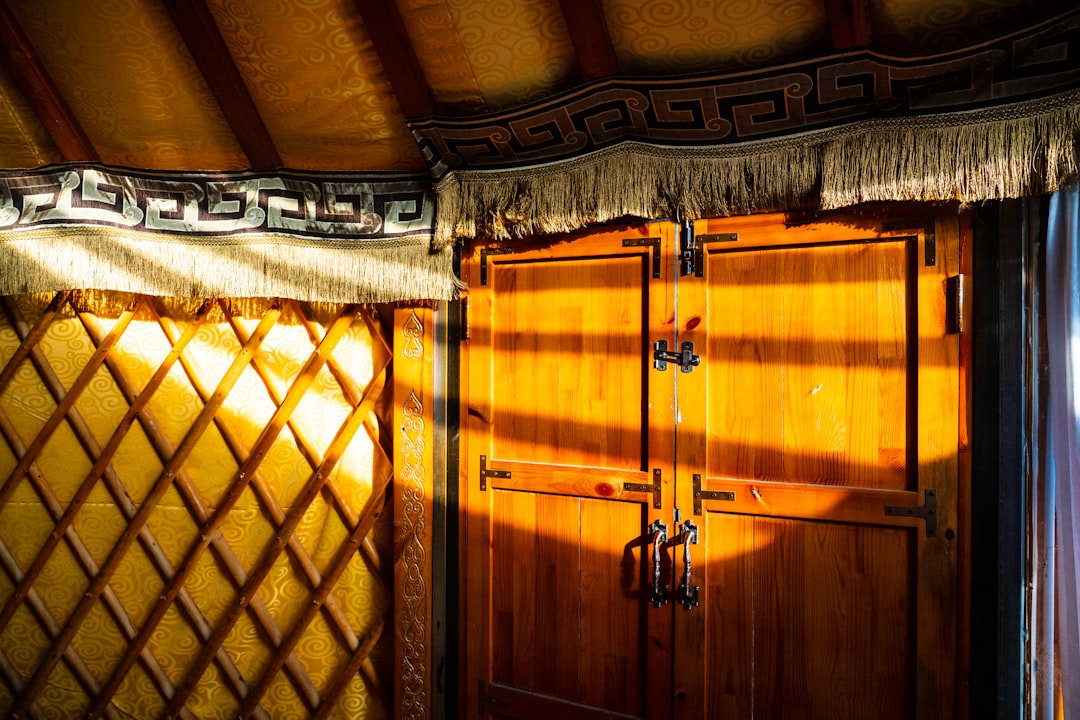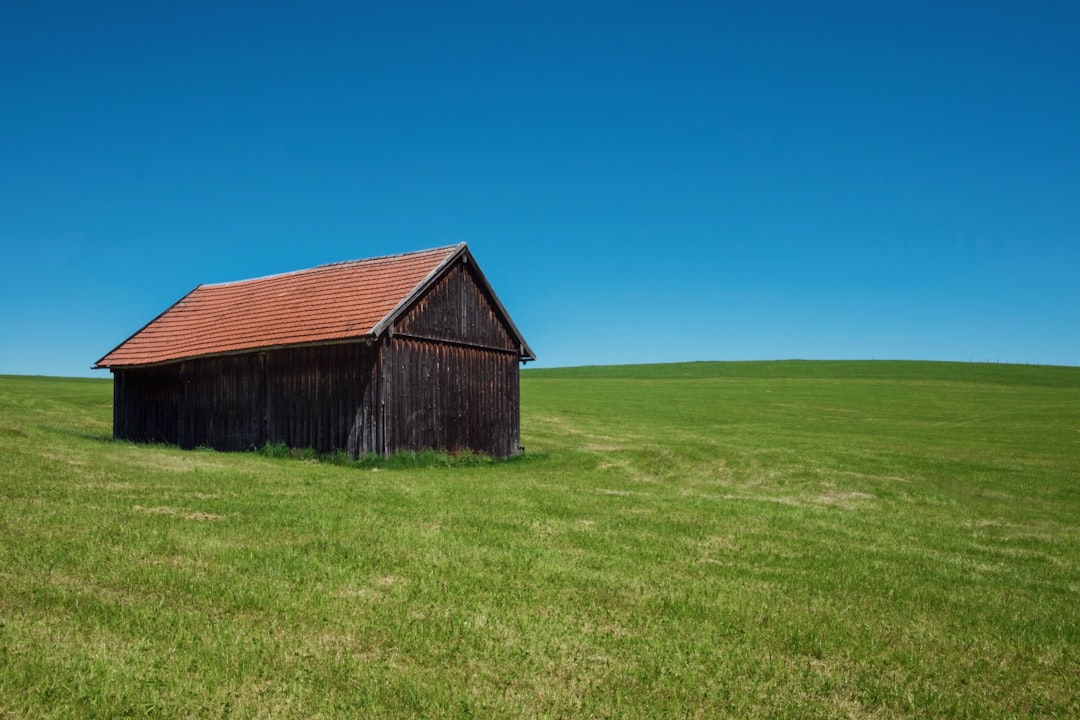Embrace Local Living Stay in Authentic Mongolian Yurts or Amish Farmhouses
Embrace Local Living Stay in Authentic Mongolian Yurts or Amish Farmhouses - Headline: Embrace Local Living: Stay in Authentic Mongolian Yurts or Amish Farmhouses

Visitors can stay in traditional Mongolian yurts and Amish farmhouses, allowing them to connect with these distinct lifestyles and traditions firsthand.
Mongolian yurts were originally designed to be easily assembled and disassembled, allowing nomadic communities to transport their homes as they followed their herds.
The unique lattice-style frame and felt or cotton coverings provide excellent insulation, keeping the interior comfortable in both extreme heat and cold.
Amish farmhouses often incorporate traditional German-inspired architectural elements, such as the use of natural stone, wood, and whitewashed exteriors.
These design choices not only reflect the Amish's religious and cultural values but also help to regulate indoor temperatures without reliance on modern HVAC systems.
Many Mongolian yurts are now equipped with solar panels, allowing for the integration of renewable energy sources and reducing the ecological impact of traditional yurt living.
This innovative approach showcases the adaptability of this ancient dwelling type to modern sustainable practices.
These dwellings often feature hidden storage compartments, multi-purpose rooms, and strategically placed windows to optimize natural lighting.
The interior of Mongolian yurts is typically adorned with intricate felt appliqué and embroidery, reflecting the rich artistic traditions of the Mongolian people.
These textiles not only serve as decoration but also play a crucial role in the insulation and acoustics of the yurt.
Amish farmhouses are constructed using time-honored techniques, such as timber framing and hand-hewn beams, which showcase the craftsmanship and attention to detail of the Amish community.
These methods have been passed down through generations, ensuring the preservation of traditional building practices.
What else is in this post?
- Embrace Local Living Stay in Authentic Mongolian Yurts or Amish Farmhouses - Headline: Embrace Local Living: Stay in Authentic Mongolian Yurts or Amish Farmhouses
- Embrace Local Living Stay in Authentic Mongolian Yurts or Amish Farmhouses - Uncover the Simplicity of Amish Farmhouse Stays
- Embrace Local Living Stay in Authentic Mongolian Yurts or Amish Farmhouses - Affordable Yurt Accommodations Around Ulaanbaatar
- Embrace Local Living Stay in Authentic Mongolian Yurts or Amish Farmhouses - Remote Yurt Experiences in Khustai National Park
- Embrace Local Living Stay in Authentic Mongolian Yurts or Amish Farmhouses - Respect and Connect with Amish Culture and Traditions
- Embrace Local Living Stay in Authentic Mongolian Yurts or Amish Farmhouses - Blending Comfort and Authenticity in Mongolian Yurt Stays
Embrace Local Living Stay in Authentic Mongolian Yurts or Amish Farmhouses - Uncover the Simplicity of Amish Farmhouse Stays
These family-run accommodations often feature simple yet comfortable amenities, home-cooked meals, and opportunities to participate in traditional activities like quilt making or butter churning.
The Amish population in the United States has grown by over 150% since 1990, with the largest settlements located in Pennsylvania, Ohio, and Indiana.
Amish homes are designed to be energy-efficient, often featuring thick walls, small windows, and wood-burning stoves to minimize the use of electricity and fossil fuels.
Amish quilting is considered a highly precise art form, with intricate patterns and stitches that can take months to complete a single quilt.
The average Amish family has around 6-8 children, contributing to the rapidly growing Amish population in the U.S.
Amish farming practices, such as crop rotation and the use of draft horses, have been shown to have a lower environmental impact compared to conventional industrial agriculture.
The Amish community maintains a strong focus on self-sufficiency, with many Amish-owned businesses providing goods and services to both the Amish and non-Amish populations.
Embrace Local Living Stay in Authentic Mongolian Yurts or Amish Farmhouses - Affordable Yurt Accommodations Around Ulaanbaatar

Ulaanbaatar offers a variety of affordable yurt accommodations that allow travelers to embrace local living and experience authentic Mongolian nomadic life.
These yurt stays, which can cost as little as $15 per night, provide comfortable lodging and access to traditional activities, often set against the stunning Mongolian countryside.
Mongolian yurts, traditionally known as "gers," are circular tent-like structures made of a wooden frame covered with felt or skins, designed to be easily transported and assembled by nomadic herders.
The average size of a traditional Mongolian ger is around 5-6 meters in diameter, with a central smoke hole at the top allowing for natural ventilation and accommodating a wood-burning stove for heating during the cold Mongolian winters.
Many yurt rental options in Ulaanbaatar include amenities such as comfortable beds, outdoor seating areas, and access to shared cooking facilities, making them a budget-friendly alternative to traditional hotel accommodations.
Staying in a yurt allows visitors to Ulaanbaatar to experience the essence of Mongolian nomadic life, including the opportunity to participate in traditional activities such as horseback riding, archery, and cashmere production.
Several websites, including Airbnb and Trip101, feature a wide range of affordable yurt accommodations in Ulaanbaatar, with prices starting as low as $15 per night and many options costing under $ Many yurt rentals in Ulaanbaatar are located close to the city center, allowing guests to easily explore the capital's attractions while also experiencing the tranquility of the Mongolian countryside.
Embrace Local Living Stay in Authentic Mongolian Yurts or Amish Farmhouses - Remote Yurt Experiences in Khustai National Park
Visitors can stay in authentic Mongolian yurts, also known as ger, which are traditional nomadic dwellings.
These yurts provide an opportunity to experience the traditional customs of Mongolian nomads while surrounded by the park's diverse wildlife, including the Takhi, a rare and endangered horse species.
Khustai National Park is home to the Przewalski's horses, the last and only wild horse species left on Earth, with a population of around 300-400 individuals.
The park's terrain is characterized by rolling grasslands, rugged mountains, and forests, covering an area of approximately 506,000 hectares.
The traditional Mongolian yurts, also known as ger, are designed to be portable and can be easily disassembled and reassembled, making them ideal for nomadic families.
The yurts are typically made of felt, wood, and animal hide, providing excellent insulation against the harsh Mongolian climate, which can drop to -40°C in winter.
Khustai National Park is home to a variety of wildlife, including deer, elk, marmots, and over 200 species of birds, making it a paradise for nature enthusiasts.
The park's unique landscape is shaped by the Khentii Mountains, which are part of the Eastern Mongolian Mountains, and are known for their scenic beauty and rich mineral deposits.
The Mongolian nomads, who are the traditional inhabitants of the park, have a rich cultural heritage, with a history dating back to the 13th century and the time of Genghis Khan.
The yurts in Khustai National Park are usually equipped with basic amenities, such as beds, tables, and stoves, but may not have modern luxuries like electricity or running water.
The park's remote location, with the nearest town being Ulaanbaatar, the capital city of Mongolia, makes it an ideal destination for those seeking a truly off-the-beaten-path experience.
Embrace Local Living Stay in Authentic Mongolian Yurts or Amish Farmhouses - Respect and Connect with Amish Culture and Traditions

Amish farmhouses offer a peaceful retreat, providing insight into their traditional values of simplicity and community.
Meanwhile, staying in authentic Mongolian yurts allows visitors to experience the centuries-old nomadic way of life in Central Asia.
These accommodations offer an alternative to conventional lodging, inviting travelers to respectfully connect with these distinct cultural traditions.
The Amish community strictly prohibits the use of modern technology, such as electricity, cars, and telephones, as they believe it can distract from their devotion to a simple, agricultural lifestyle.
Amish women often wear long, solid-colored dresses and bonnets, while the men wear plain suits and broad-brimmed hats, which serve as a visual representation of their commitment to modesty and humility.
Amish children typically attend small, one-room schoolhouses until the 8th grade, where they receive a basic education focused on practical skills and the German language, rather than pursuing higher education.
Rumspringa, a period of adolescence where Amish youth are allowed to temporarily explore the outside world, is a unique tradition that allows them to make an informed decision about whether to be baptized and fully commit to the Amish way of life.
The Amish community places a strong emphasis on self-sufficiency and sustainable agriculture, with many Amish families operating their own farms and relying on horse-drawn buggies for transportation.
Amish weddings are typically held in the bride's home and feature simple, traditional ceremonies without the use of modern wedding attire or decorations, reflecting their values of humility and simplicity.
Amish funerals are similarly plain, with the deceased being buried in a simple wooden casket, and the service focusing on prayer, hymns, and community support rather than elaborate rituals.
The Amish community has a unique system of mutual aid, where members support each other through the "Ordnung," a set of unwritten rules that govern daily life and maintain social cohesion.
Despite their rejection of modern technology, the Amish have adapted some innovations, such as the use of gas-powered generators and power tools, to support their agricultural and construction needs without compromising their core beliefs.
Embrace Local Living Stay in Authentic Mongolian Yurts or Amish Farmhouses - Blending Comfort and Authenticity in Mongolian Yurt Stays
Travelers seeking an authentic Mongolian experience can choose from a variety of yurt stays that blend traditional elements with modern comforts.
Mongolian yurts, or "gers," have been used as portable dwellings for over 3,000 years, allowing nomadic herders to adapt to the harsh climate and terrain of Central Asia.
The wooden frame of a traditional Mongolian yurt is covered with layers of felt made from sheep's wool, which provides excellent insulation and can withstand extreme temperatures ranging from -40°C in winter to +40°C in summer.
Yurts are designed to be easily assembled and disassembled, with the entire structure taking as little as an hour to set up, enabling Mongolian nomads to pack up their homes and relocate with their herds as needed.
The round shape of a yurt is not just for aesthetics - it is an aerodynamic design that helps the structure withstand strong winds common in the Mongolian steppe.
The roof of a yurt is held up by a central wooden column, which is considered a sacred element and plays a crucial role in traditional Mongolian ceremonies and rituals.
Many modern yurt accommodations in Mongolia feature hand-painted wood-framed beds, private bathrooms, and other amenities, blending traditional design with contemporary comforts.
Some luxury yurt camps, like Three Camel Lodge, use a latticed wood structure covered with layers of felt and canvas to create a more spacious and comfortable living environment for guests.
Staying in a traditional Mongolian yurt allows travelers to experience the rich nomadic culture, from the hospitality of the local hosts to the role of the central pillar in ceremonies.
The simple, minimalist design of Mongolian yurts has inspired modern architects and designers, leading to the creation of innovative yurt-inspired structures around the world.
Compared to traditional hotel rooms, staying in a Mongolian yurt can be a more cost-effective option for travelers, allowing them to experience authentic local living without breaking the bank.
